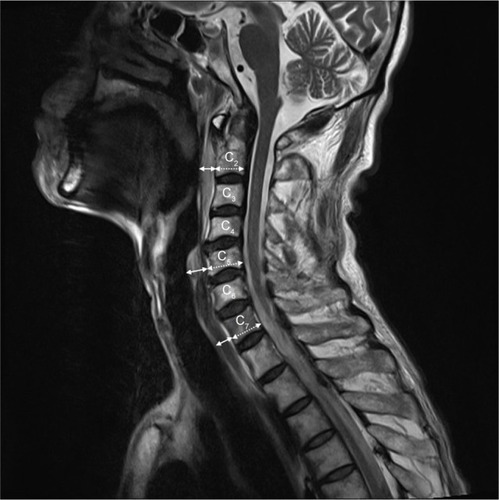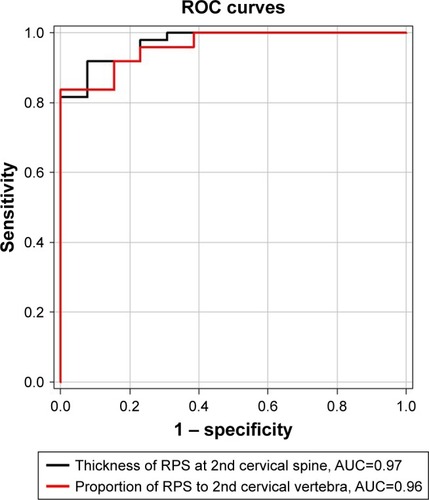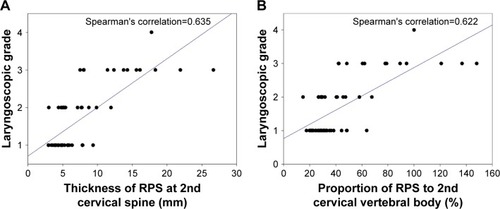Figures & data
Figure 1 Measurements of RPS in 2nd, 5th and 7th cervical spine level in median sagittal MRI images.
Abbreviations: A–P, antero-posterior; MRI, magnetic resonance imaging; RPS, retropharyngeal space.

Table 1 Characteristics of patients
Table 2 Quantitative measurement of retropharyngeal space between easy and difficult laryngoscopy during anesthesia induction in patients with traumatic cervical spine injury
Table 3 Univariate logistic regression analysis for the prediction of difficult laryngoscopy in patients with traumatic cervical spine injury
Figure 2 ROC curve and AUC of the RPS at the 2nd cervical spine level.
Abbreviations: AUC, area under the curve; ROC, receiver operating characteristic; RPS, retropharyngeal space.


